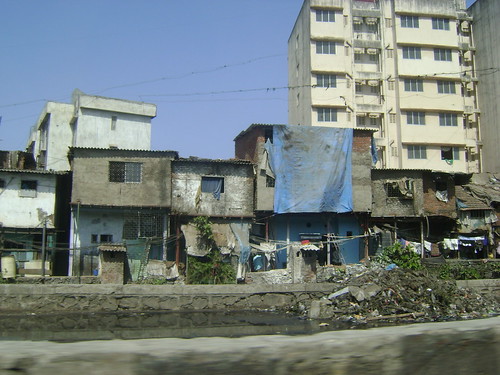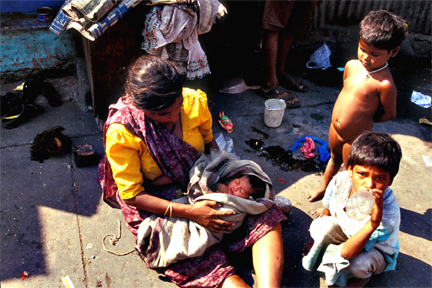A study of the maternity care and births in Mumbai slums
By Kashif-ul-Huda, TwoCircles.net,
A large number of Muslims of India live in poverty and they are the majority of the poorest of the poor living in slums. This is according to a study conducted in 2006 in Mumbai. The details of the study were published earlier this month.
Mumbai is home to millions of residents and more than half of them live in congested areas with virtually no civic services of any kind. These slums provide cheaper housing alternatives for people who migrated to Mumbai in search of better lives. People of different regions, speaking multiple languages, and observing various religious practices live side by side. A study published on June 5th, 2009 in International Journal for Equity in Health suggests that Muslims are overwhelmingly represented in these slums and also they are in general poorer than Hindus living in the same area.

TCN photo
The study was jointly conducted by Society for Nutrition, Education and Health Action (SNEHA), an NGO based in Mumbai, and Centre for International Health and Development (CIHD) of University College London.
The main finding of the study is that the population living in slums is not homogeneous and there are differences if population is divided based on various socio-economic factors. The researchers interviewed over five thousand mothers in 48 slum areas of Mumbai. Based on the detailed interviews they divided the women in four groups from least poor to most poor. These divisions were made on various factors including house ownership, type of construction, possession of ration card, source of electricity, type of toilet, etc.
The four groups thus generated were not artificial creations as clear trends were visible for various factors. Mothers belonging to the most poor groups are more likely to be a teenager, having lower literacy, and access to only public and shared water as opposed to the least poor group which is older, literate, and about a quarter of them access to water in their home. Most poor mothers also chose home or a public facility as the site of delivery while mothers belonging to the least poor group prefer private facility to deliver.
About 60% of slum dwellers own their home and though majority of the houses are permanent construction only 4% had toilet facility in them. Study also found that about a quarter of the women interviewed moved in their present residence within the last year, suggesting higher mobility but it also found 13% to be born in the houses they were living in suggesting that at least these families were not able to improve their economic condition in all these years.

Photo by renu parkhi
The study also found that the sex ratio was much lower than the national average. 882 females per 1000 males ratio was consistent among all four groups which is much lower than the national average of 933 females per 1000 males according to 2001 census.
Out of 5238 women that this study covered, 2411 or 46% of them were Muslims, 2480 (46.7%) were Hindus and 347 (7%) others. Higher percentages of Muslims were in the most poor of the four groups clustered according to various socio-economic factors.
|
Religion |
Group 1 (most poor) |
Group 2 |
Group 3 |
Group 4 (least poor) |
|
Hindu |
415 (32%) |
600 (46%) |
712 (54%) |
753 (57%) |
|
Muslim |
858 (65%) |
638 (49%) |
474 (36%) |
441(34%) |
|
Other |
36 (3%) |
70 (5%) |
126 (10%) |
115 (9%) |
Replying to queries by TwoCircles.net, David Osrin the corresponding author of the study agreed that the study is “fairly representative of established slum areas” of Mumbai. When asked about the data that shows that more Muslim women are in most poor groups Dr. Osirin explained that the data “suggests that there are greater proportions of Muslim women in the lower socioeconomic bands than in the higher bands. One could say that, in the most general sense, Muslim women seem to be poorer in the slum areas.”
As a part of this research CIHD is working with SNEHA and other women’s groups and health services to improve the health of women and children.
Neena Shah More, Ujwala Bapat, Sushmita Das, and Armida Fernandez of SNEHA and Anthony Costello and David Osrin of CIHD were researchers for this study.
Links:
http://www.equityhealthj.com/
http://www.ucl.ac.uk/cihd
http://www.snehamumbai.org/
